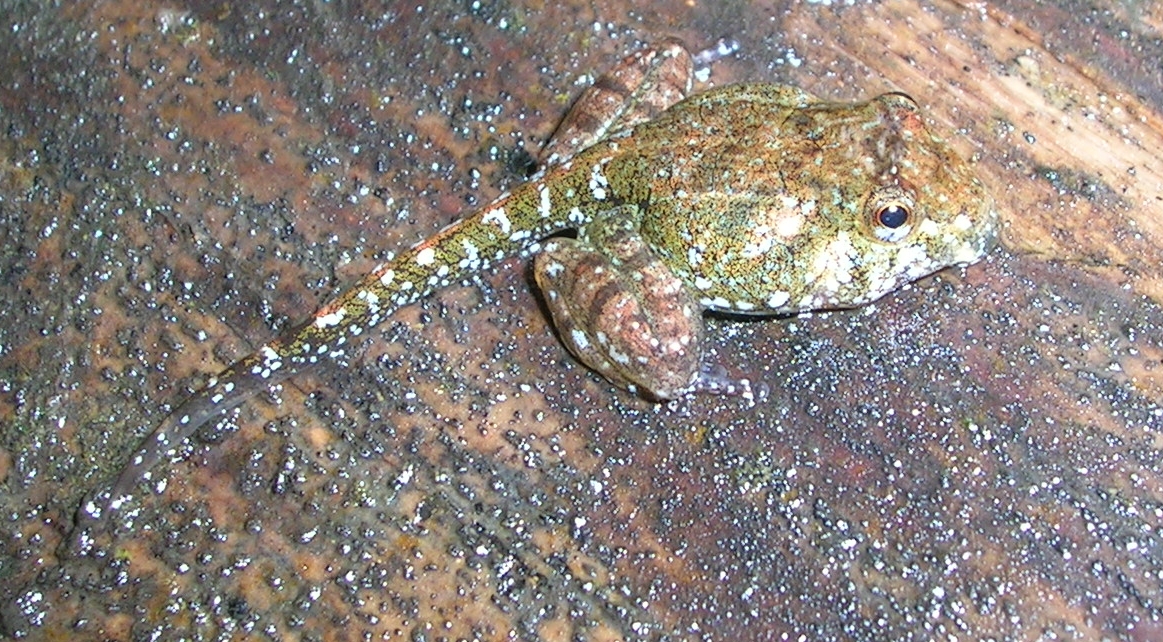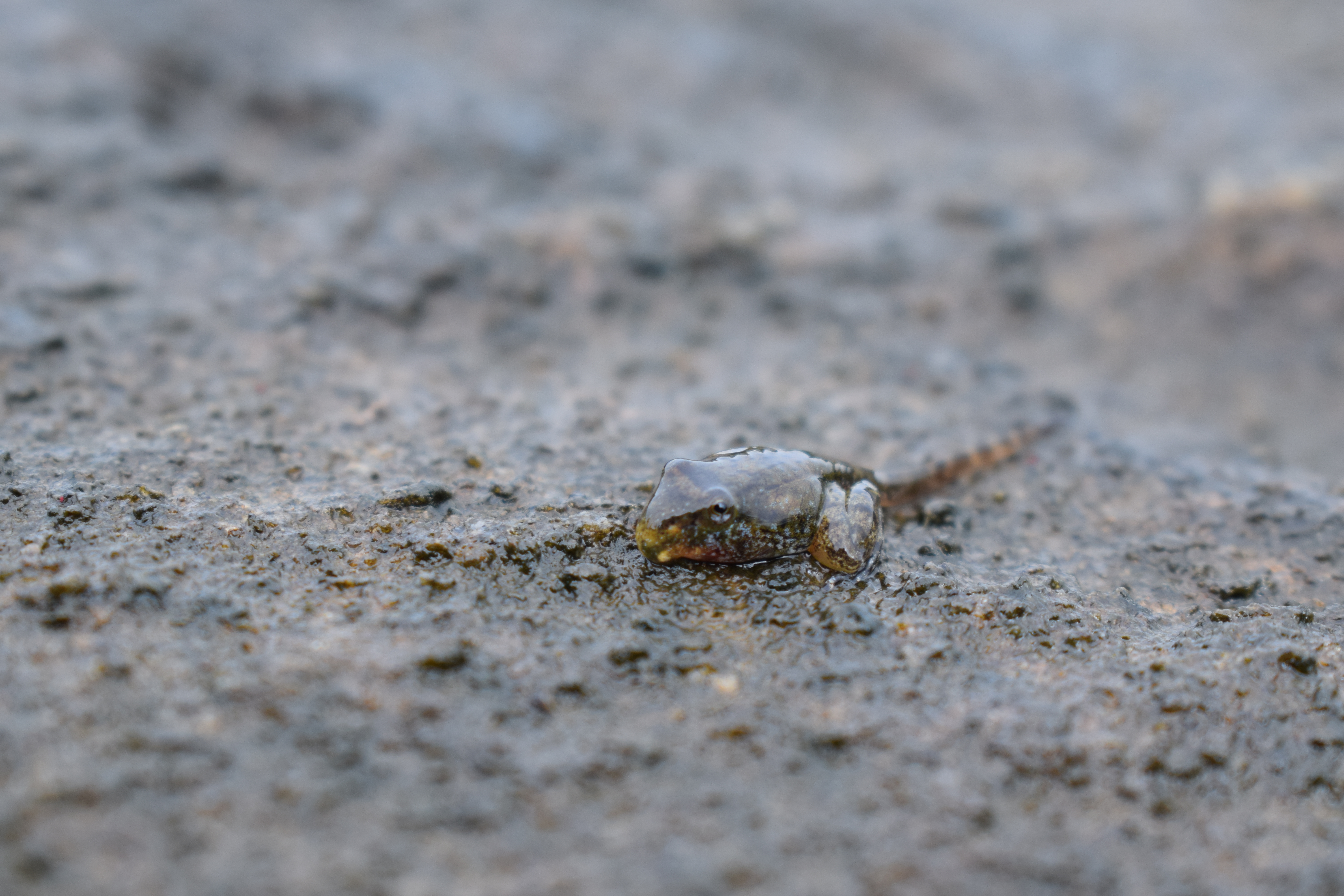Indirana on:
[Wikipedia]
[Google]
[Amazon]

 ''Indirana'' is a genus of
''Indirana'' is a genus of


 ''Indirana'' is a genus of
''Indirana'' is a genus of frog
A frog is any member of a diverse and largely semiaquatic group of short-bodied, tailless amphibian vertebrates composing the order (biology), order Anura (coming from the Ancient Greek , literally 'without tail'). Frog species with rough ski ...
s in the family Ranixalidae
Ranixalidae is a family of frogs commonly known as the leaping frogs or Indian frogs. They are endemic to central and southern India, specifically in the Western Ghat mountain range. This mountain range encompasses the Indian states of Gujarat, ...
. These frogs are endemic
Endemism is the state of a species being found only in a single defined geographic location, such as an island, state, nation, country or other defined zone; organisms that are indigenous to a place are not endemic to it if they are also foun ...
to the Western Ghats of India
India, officially the Republic of India, is a country in South Asia. It is the List of countries and dependencies by area, seventh-largest country by area; the List of countries by population (United Nations), most populous country since ...
. They are sometimes known under the common name Indian frogs, whereas members of their parent family are named "leaping frogs".
''Indirana'' represent an ancient radiation of frogs that diverged from all other frogs almost 50 million years ago. This has credited ''Indirana gundia
''Indirana gundia'' is a species of frog found in the Western Ghats of India. It is only known from its type locality, Kempholey, Karnataka. ''Indirana gundia'' is listed among "Top 100 EDGE Amphibians". It represents a family that has been ...
'' as a status of one of the "Top 100 Evolutionarily Distinct and Globally Endangered Amphibians".
Description
''Indirana'' species are small and slender-bodied frogs. They are typically found in leaf litter or near streams. Thetadpole
A tadpole or polliwog (also spelled pollywog) is the Larva, larval stage in the biological life cycle of an amphibian. Most tadpoles are fully Aquatic animal, aquatic, though some species of amphibians have tadpoles that are terrestrial animal, ...
s have hind limbs and finless tails, and are able to leap away to escape threats.
Taxonomy
Traditional classifications place the genus within the subfamilyRanixalinae
Ranixalidae is a family of frogs commonly known as the leaping frogs or Indian frogs. They are endemic to central and southern India, specifically in the Western Ghat mountain range. This mountain range encompasses the Indian states of Gujarat, ...
of the family Ranidae, along with the genera ''Nannophrys
''Nannophrys'' is a genus of frogs endemic to Sri Lanka. It used to be placed in the large frog family Ranidae but a phylogenetic study was undertaken using DNA sequences and it is now included in the family Dicroglossidae. They are sometimes kn ...
'' and ''Nyctibatrachus
''Nyctibatrachus'' is a genus of frogs endemism, endemic to the Western Ghats of southwestern India. Their common name is night frogs. Their scientific name also means "night frog", in reference to their habits and dark color. They are the onl ...
''. The Ranixalinae have also been placed under the family Nyctibatrachidae
Nyctibatrachidae is a small family of frogs found in the Western Ghats of India and in Sri Lanka. Their common name is robust frogs. Recognition of Nyctibatrachidae as a family is fairly recent. These frogs were previously placed in the broadly ...
. Darrel R. Frost ''et al.'' (2006) placed them within the family Petropedetidae
The Petropedetidae are a family of frogs containing two genera and 11 species. They are found in sub-Saharan tropical Africa and are sometimes known under common name African torrent frogs.
They are inhabitants of the splash-water zone of clear ...
.
Species
New species are still being discovered: ''Indirana salelkari
''Indirana salelkari'', the Netravali leaping frog, is a species of frog in the family Ranixalidae. It is endemic to India's Western Ghat mountains.
Appearance
The adult male frog measures 24.7–27.7 mm in snout-vent length and the adult ...
'' was discovered in the Netravali Wildlife Sanctuary in the Indian state of Goa and described in late July 2015. The following species are recognised in the genus ''Indirana'':
* ''Indirana beddomii
''Indirana beddomii'', Beddome's leaping frog, Beddome's Indian frog, or simply Beddome's frog, is a species of frog found in the Western Ghats. They are usually detected by their long leaps as they flush from the ground when disturbed. The sp ...
'' (Günther, 1876)
* ''Indirana bhadrai
''Indirana bhadrai'', the Bhadra leaping frog, is a species of frog in the family Ranixalidae. It is endemic to India's Western Ghat mountains, north of the Palged Gap.
The adult male frog averages 30.2 mm in snout-vent length and the adu ...
'' Garg and Biju, 2016
* '' Indirana brachytarsus'' (Günther, 1876)
* ''Indirana chiravasi
''Indirana chiravasi'' (common name: Amboli leaping frog) is a species of frog endemic to the Western Ghats of India. It is only known from its type locality, the laterite plateaus by the hill-station of Amboli, Maharashtra. It was describe ...
'' Padhye, Modak, and Dahanukar, 2014
* ''Indirana duboisi
''Indirana duboisi'', the Karnataka leaping frog or Dubois's leaping frog, is a frog. It is endemic to India in the Western Ghat mountains.
Habitat
This frog inhabits secondary forests and in forests with at least some evergreen trees. This fro ...
'' Dahanukar, Modak, Krutha, Nameer, Padhye, and Molur, 2016
* ''Indirana gundia
''Indirana gundia'' is a species of frog found in the Western Ghats of India. It is only known from its type locality, Kempholey, Karnataka. ''Indirana gundia'' is listed among "Top 100 EDGE Amphibians". It represents a family that has been ...
'' (Dubois, 1986)
* ''Indirana leithii
''Indirana leithii'' (Leith's leaping frog, Leith's frog, Boulenger's brown frog, Matheran leaping frog, or Matheran Indian frog) is a species of frog in the family Ranixalidae. It is endemic to the northern Western Ghats of India. As currentl ...
'' (Boulenger, 1888)
* '' Indirana longicrus'' (Rao, 1937)
* '' Indirana paramakri'' Garg and Biju, 2016
* ''Indirana salelkari
''Indirana salelkari'', the Netravali leaping frog, is a species of frog in the family Ranixalidae. It is endemic to India's Western Ghat mountains.
Appearance
The adult male frog measures 24.7–27.7 mm in snout-vent length and the adult ...
'' Modak, Dahanukar, and Padhye, 2015
* '' Indirana sarojamma'' Dahanukar, Modak, Krutha, Nameer, Padhye, and Molur, 2016
* ''Indirana semipalmata
''Indirana semipalmata'' is a species of frog endemic to the Western Ghats region of southern India. They are small frogs, reaching lengths of about from snout to vent. The species breeds during the monsoons, laying their eggs on moist rocks a ...
'' (Boulenger, 1882)
* '' Indirana tysoni'' Dahanukar, Modak, Krutha, Nameer, Padhye, and Molur, 2016
* '' Indirana yadera'' Dahanukar, Modak, Krutha, Nameer, Padhye, and Molur, 2016
References
External links
{{Taxonbar, from=Q1932872 Amphibians of India Endemic fauna of the Western Ghats Amphibian genera Taxa named by Raymond Laurent